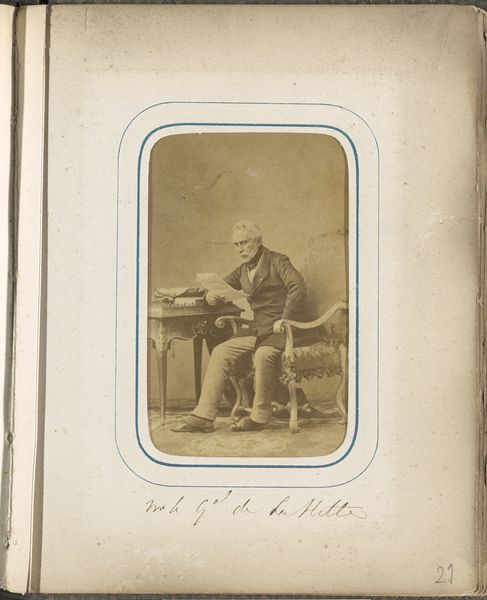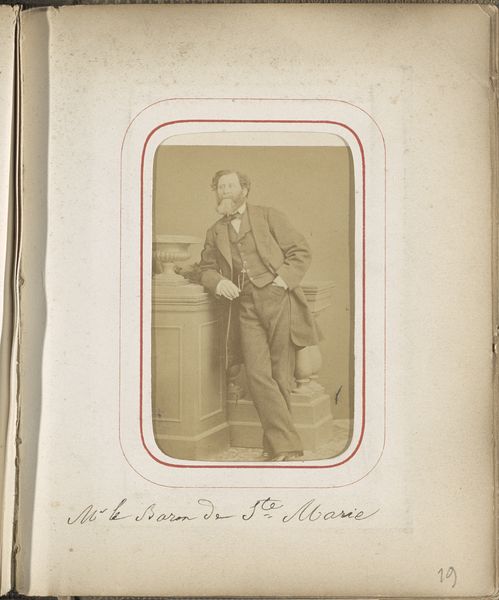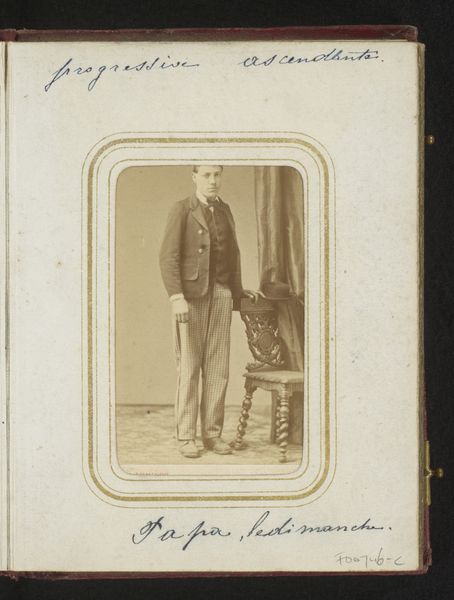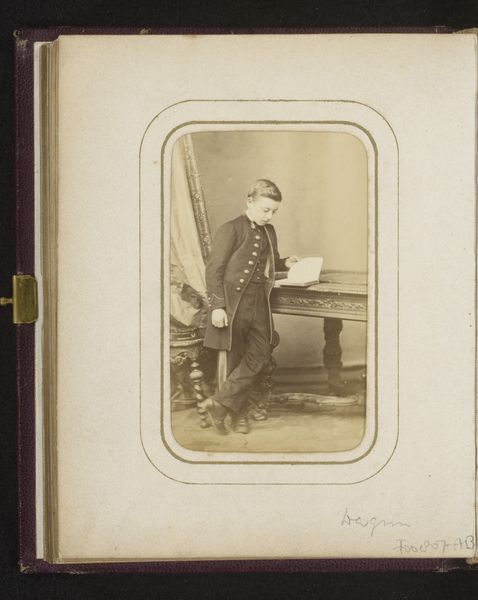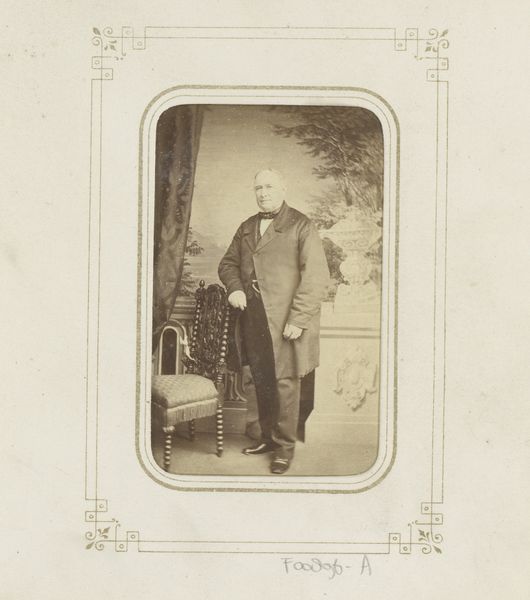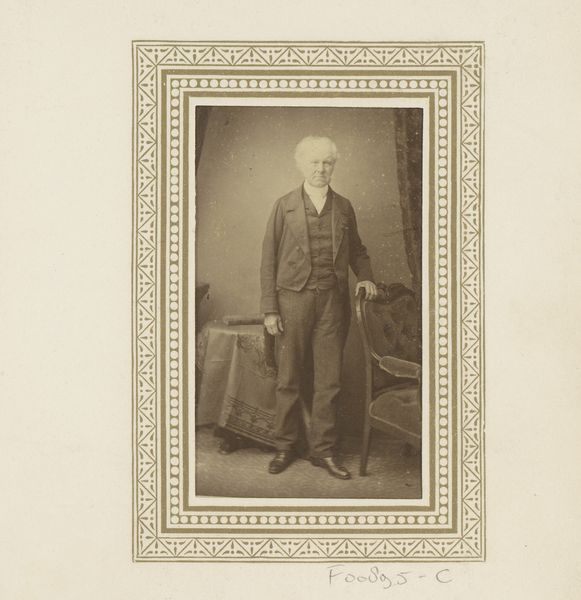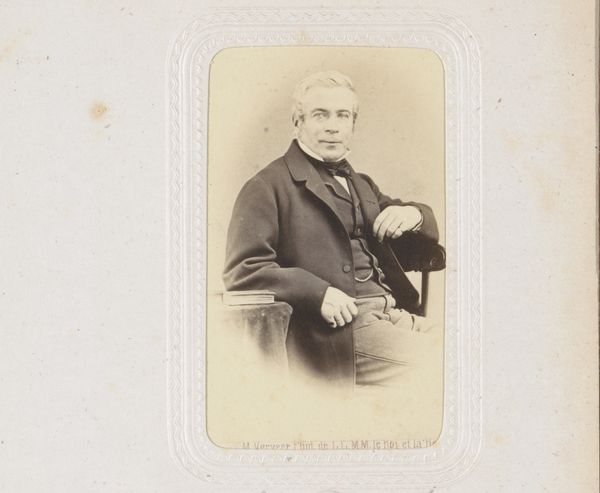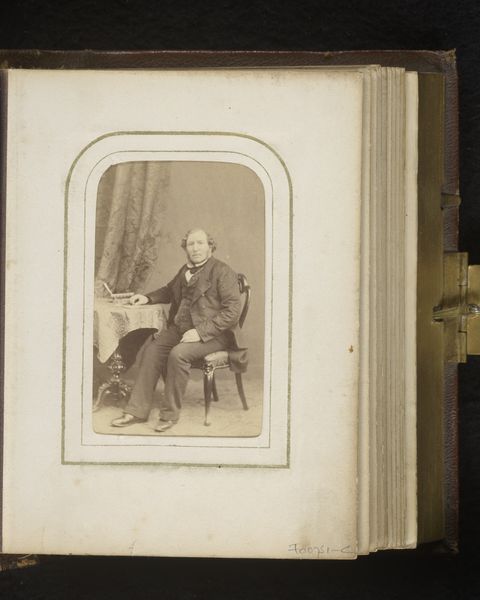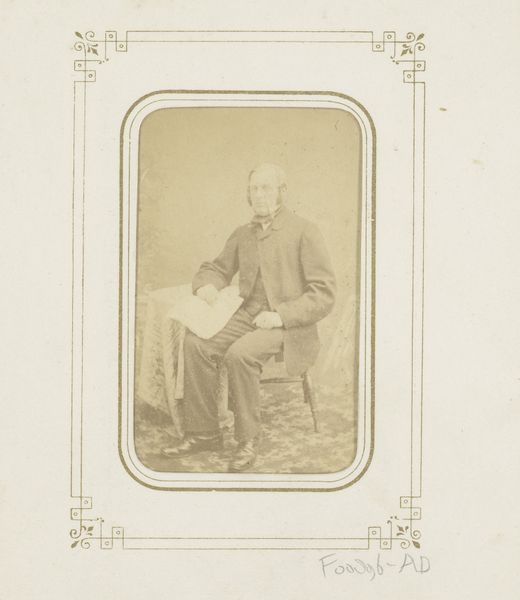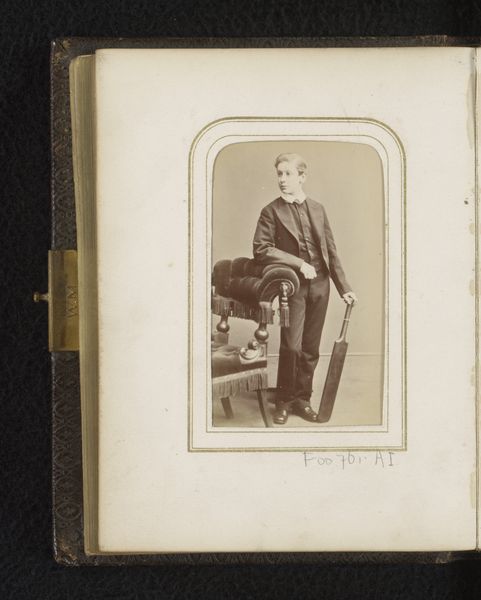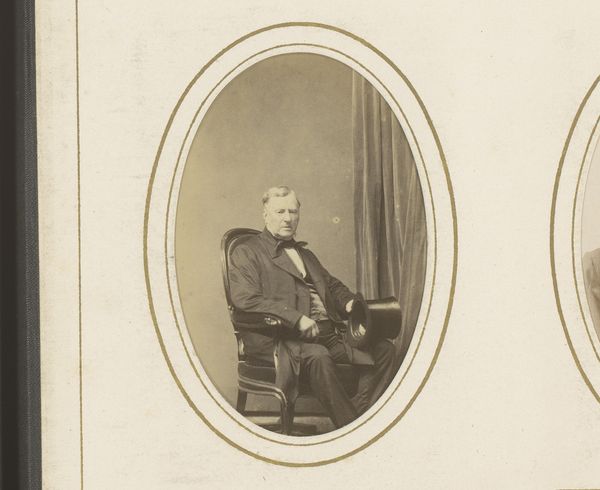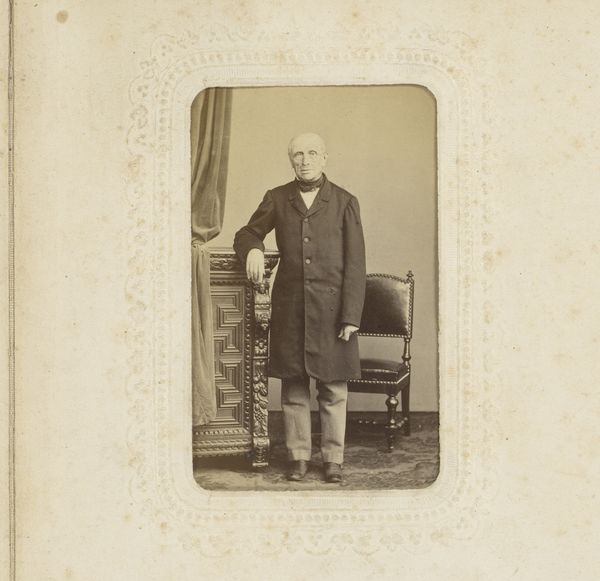
photography
#
portrait
#
photography
#
watercolor
#
realism
Dimensions: height 98 mm, width 61 mm
Copyright: Rijks Museum: Open Domain
Curator: Here at the Rijksmuseum, we have an intriguing photographic portrait to consider: "Portret van generaal Rolin," believed to have been made before 1869. The piece shows a full body portrait of Rolin posing next to a small table. Editor: The sepia tones lend a gravitas to the portrait that is both beautiful and slightly unsettling. His stance, leaning on a walking stick, gives the sense of both strength and dependence. Curator: Yes, let's think about that. Considering the date, this photograph exists within a time of rapid technological and societal shifts. Photography offered new means of representation, yet portraiture continued to reinforce power structures and class distinctions. Rolin's attire, his stance, the table adorned with his top hat – they all speak to his position within a certain hierarchy. Editor: Absolutely, that hat alone is such a symbol! Even perched on the table like that, it carries enormous weight as a signifier of class and profession. Notice the carefully chosen objects around him - the chair itself! It's a fascinating glimpse into how people chose to present themselves to the world at that time. It speaks volumes about carefully cultivated image. Curator: Precisely, his carefully posed nature points to the sitter and photographer being deeply aware of the power the image has in constructing identity. Rolin wants to show off the fact he has the finery and decorum worthy of high society. We are left to consider how staged all portraits, photographic or painted, can be. Editor: I agree completely. It’s an intimate yet performative display. In essence, he’s curating himself, much like we're curating him now by dissecting the many material signals he sent and inherited. I am moved and also left wondering how honest of a portrait this really is. Curator: Well, by exploring portraits of the period with our critical lens, we reveal the intersection of class, technology, and social power inherent in such a moment. It leaves me hoping we can create a space to question such portraiture when discussing contemporary identity. Editor: And I find that by observing Rolin’s self-constructed identity, one based on tradition, we might have an interesting portal to enter discussions about ourselves.
Comments
No comments
Be the first to comment and join the conversation on the ultimate creative platform.
